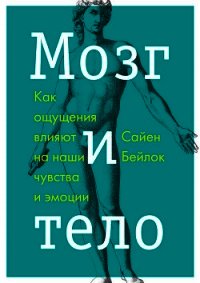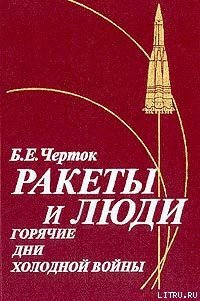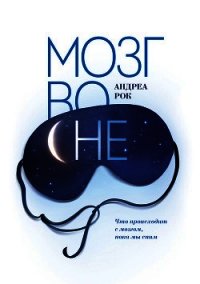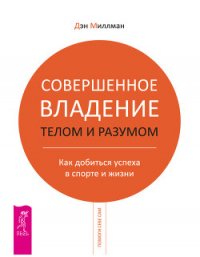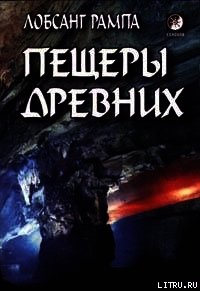Мозг рассказывает.Что делает нас людьми - Рамачандран Вилейанур С. (прочитать книгу txt) 📗
V. (2004). A touching sight: SII/PV activation during the observation and
experience of touch. Neuron, 42,335-346.
Kim, C.-Y., Blake, R., & Palmeri, T. J. (2006). Perceptual interaction
between real and synesthetic colors. Cortex, 42,195-203.
‘Kinsbourne,
M.
(1982).
Hemispheric
specialization.
American
Psychologist, Ъ1, 222231.
Kolmel, К. F., Vehmeyer, К., & Gohring, E., et al. (1991). Treatment of
advanced malignant melanoma by a pyrogenic bacterial lysate: A pilot study.
Onkologie, 14, 411-417.
Kosslyn, S. М., Reiser, B. J., Farah, M. J., &c Fliegel, S. L. (1983).
Generating visual images: Units and relations. Journal of Experimental
Psychology, General, 112, 278-303.
Lakoff, G., & Johnson, M. (2003). Metaphors we live by. Chicago:
University of Chicago Press.
Landis, Т., & Thut, G. (2005). Linking out-of-body experience and self
processing to mental own-body imagery at the temporoparietal junction. The
Journal of Neuroscience, 25, 550-557.
"LeDoux, J. (2002). Synaptic self. How our brains become who we are.
New York: Viking Press.
*Luria, A. (1968). The mind of a mnemonist. Cambridge, MA: Harvard
University Press.
MacLachlan, М., McDonald, D., & Waloch, J. (2004). Mirror treatment of
lower limb phantom pain: A case study. Disability and Rehabilitation, 26, 901-
904.
Matsuo, A., Tezuka, Y., Morioka, S., Hiyamiza, М., & Seki, M. (2008).
Mirror therapy accelerates recovery of upper limb movement after stroke: A
randomized crossover trial [Abstract]. Paper presented at the 6th World Stroke
Conference, Vienna, Austria.
Mattingley, J. B., Rich, A. N., Yelland, G., & Bradshaw, J. L. (2001).
Unconscious priming eliminates automatic binding of colour and alphanumeric
form in synaesthesia. Nature, 401(6828), 580-582.
McCabe, C. S., Haigh, R. C., Halligan, P. W., & Blake, D. R. (2005).
Simulating sensorymotor incongruence in healthy volunteers: Implications for a
cortical model of pain. Rheumatology (Oxford), 44, 509-516.
McCabe, C. S., Haigh, R. C„ Ring, E. F„ Halligan, P. W., Wall, P. D„ &
Blake, D. R. (2003). A controlled pilot study of the utility of mirror visual
feedback in the treatment of complex regional pain syndrome (type 1).
Rheumatology (Oxford), 42,97-101.
McGeoch, P., Brang, D., & Ramachandran, V. S. (2007). Apraxia, metaphor
and mirror neurons . Medical Hypotheses, 69(6), 1165-1168.
’Melzack, R. A., & Wall, P. D. (1965, November 19). Pain mechanisms: A
new theory. Science, 150(3699), 971-979.
Merzenich, М. М., Kaas, J. H., Wall, J., Nelson, R. J., Sur, М., & Felleman,
D. (1983). Topographic reorganization of somatosensory cortical areas 3b and 1 in
adult monkeys following restricted deafferentation. Neuroscience, 8, 33-55.
’Milner, D., & Goodale, M. (1995). The visual brain in action. New York:
Oxford University Press.
Mitchell, J. K. (1831). On a new practice in acute and chronic rheumatism.
The American Journal of the Medical Sciences, 8(15), 55-64.
Mitchell, S. W. (1872). Injuries of nerves and their consequences.
Philadelphia: J. B. Lippincott.
Mitchell, S. W., Morehouse, G. R., & Keen, W. W. (1864). Gunshot wounds
and other injuries of nerves. Philadelphia: J. B. Lippincott.
’Mithen, S. (1999). The prehistory of the mind. London: Thames & Hudson.
Money, J., Jobaris, R., & Furth, G. (1977). Apotemnophilia: Two cases of
self-demand amputation as a paraphilia. Journal of Sex Research, 13,115-125.
Moseley, G. L., Olthof, N., Venema, A., Don, S., Wijers, М., Gallace, A., et
al. (2008). Psychologically induced cooling of a specific body part caused by the
illusory ownership of an artificial counterpart. Proceedings of the National
Academy of Sciences of the USA, 105(35), 13169-13173
Moyer, R. S., & Landauer, Т. K. (1967). Time required for judgements of
numerical inequality. Nature, 215(5109),1519-1520.
Nabokov, V. (1966). Speak, memory: An autobiography revisited. New
York: G. P. Putnam’s Sons.
Naeser, M. A., Martin, P. I., Nicholas, М., Baker, E. H., Seekins, H.,
Kobayashi М., et al. (2005). Improved picture naming in chronic aphasia after
TMS to part of right Broca’s area: An open-protocol study. Brain and Language,
93(1), 95-105.
Nuckolls, J. B. (1999). The case for sound symbolism. Annual Review of
Anthropology, 28,225-252.
Oberman, L. М., Hubbard, E. М., McCleery, J. P., Altschuler, E. L., &
Ramachandran, V. S. (2005). EEG evidence for mirror neuron dysfunction in
autism spectrum disorders. Cognitive Brain Research, 24(2), 190-198.
Oberman, L. M„ McCleery, J. P., Ramachandran, V. S., & Pineda, J. A.
(2007). EEG evidence for mirror neuron activity during the observation of human
and robot actions: Toward an analysis of the human qualities of interactive robots.
Neurocomputing, 70,2194-2203.
Oberman, L. М., Pineda, J. A., & Ramachandran, V. S. (2007). The human
mirror neuron system: A link between action observation and social skills. Social
Cognitive and Affective Neuroscience, 2,62-66.
Oberman, L. М., & Ramachandran, V. S. (2007a). Evidence for deficits in
mirror neuron functioning, multisensory integration, and sound-form symbolism in
autism spectrum disorders. Psychological Bulletin, 133(2), 310-327.
Oberman, L. М., & Ramachandran, V. S. (2007b). The simulating social
mind: The role of the mirror neuron system and simulation in the social and
communicative deficits of autism spectrum disorders. Psychological Bulletin,
133(2), 310-327.
Oberman, L. М., & Ramachandran, V. S. (2008). How do shared circuits
develop? Behavioral and Brain Sciences, 31,1-58.
Oberman, L. М., Ramachandran, V. S., & Pineda, J. A. (2008). Modulation
of mu suppression in children with autism spectrum disorders in response to
familiar or unfamiliar stimuli: the mirror neuron hypothesis. Neuropsychologia, 46,
1558- 1565.
Oberman, L. М., Winkielman, P., & Ramachandran, V. S. (2007). Face to
face: Blocking facial mimicry can selectively impair recognition of emotional
faces. Social Neuroscience, 2(3), 167-178.
Palmeri, T. J., Blake, R., Marois, R., Flanery, M. A., & Whetsell, W., Jr.
(2002). The perceptual reality of synesthetic colors. Proceedings of the National
Academy of Sciences of the USA, 99,4127-4131.
Penfield, W., & Boldrey, E. (1937). Somatic motor and sensory
representation in the cerebral cortex of man as studied by electrical stimulation.
Brain, 60, 389-443.
‘Pettigrew, J. D., & Miller, S. M. (1998). A “sticky” interhemispheric switch
in bipolar disorder? Proceedings of the Royal Society of London, Series B:
Biological Sciences, 265(1411), 2141-2148.
Pinker, S. (1997). How the mind works. New York: W. W. Norton.
’Posner, М., & Raichle, M. (1997). Images of the mind. New York: W. H.
Freeman.
'Premack, D., & Premack, A. (2003). Original intelligence. New York:
